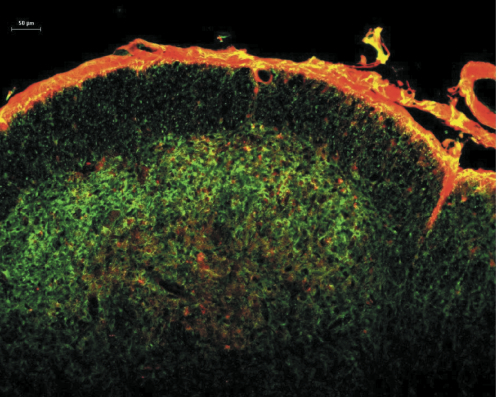ATS has been awarded a Phase I SBIR grant to develop a new line of products. Dr. Douglas Lappi is the Principal Investigator and Brian Russell is the Lead Scientist on the project. Molecules targeted towards cell surface markers have been used for years to identify specific cell types. It has been demonstrated over the course of the past decade that biologically-active molecules, when attached to these cell surface-binding molecules, can be delivered in a specific manner, utilizing the tendency of a bound receptor to be internalized. Frequently, delivery of biologically-active molecules has resulted in cell death or inhibition. It is proposed in this project to direct this technology toward specific neuronal populations with the intention of activating these cells temporarily, thereby increasing neurotransmission.
The proof of concept will include synthesis of a conjugate of an antibody to the mouse low-affinity neurotrophin receptor (p75; Cat. #AB-N01AP) and the enzymatic A1 fragment of cholera toxin (CTA1), and examination of the effects on neuronal cells that express the p75 receptor. In previous trials with CTA attached to Substance P, Caudle et al. have shown the conjugate to be useful for stimulating NK1 receptor-expressing neurons in the dorsal horn. SP-CTA (Cat. #IT-39) has been tested both in vivo and in vitro and provided excellent results in both venues.
The success of this funded project would revolutionize targeted conjugate technology. The ability for researchers to study the effects of an activated or amplified neuronal system, rather than the results of a neuronal deficit through transgenics or immunotoxins, would allow for greater understanding of the neuronal function and physiology. The application of proven ATS research tools could significantly enhance the possibility of success in therapeutic applications for the treatment of neuropsychiatric and other maladies.
Caudle R.M., Mannes AJ, Keller J, Perez FM, Suckow SK, Neubert JK. Sensitization of spinal cord nociceptive neurons with a conjugate of substance P and cholera toxin. BMC Neurosci, 8:30 (2007).

